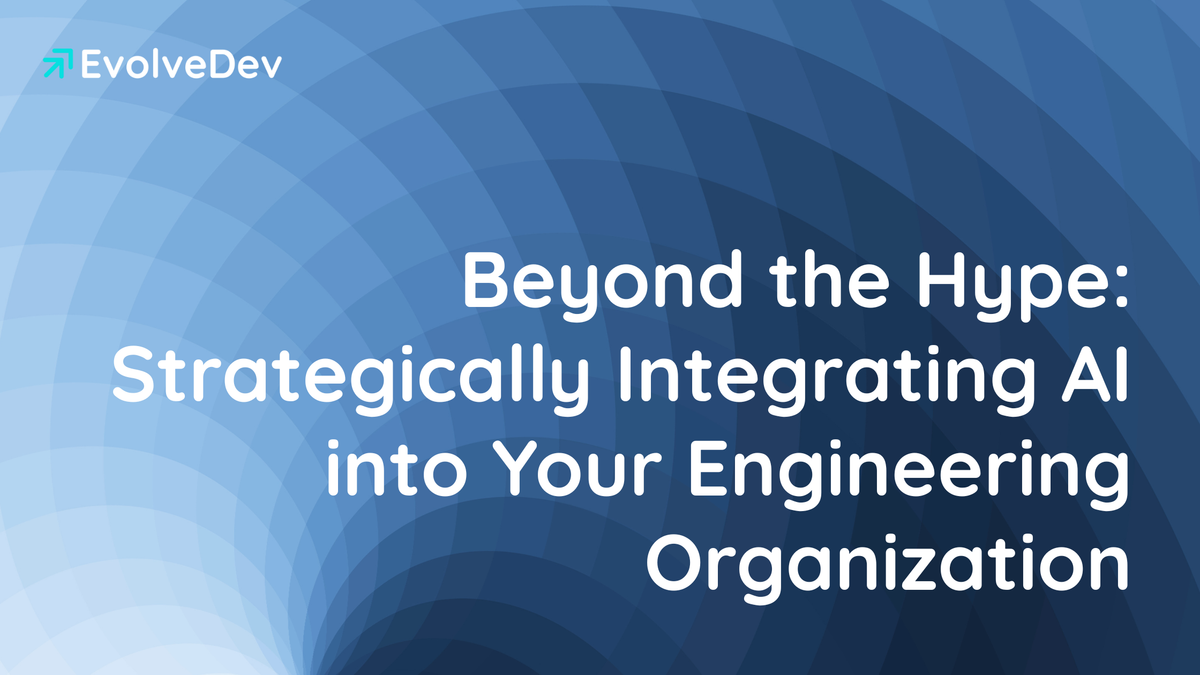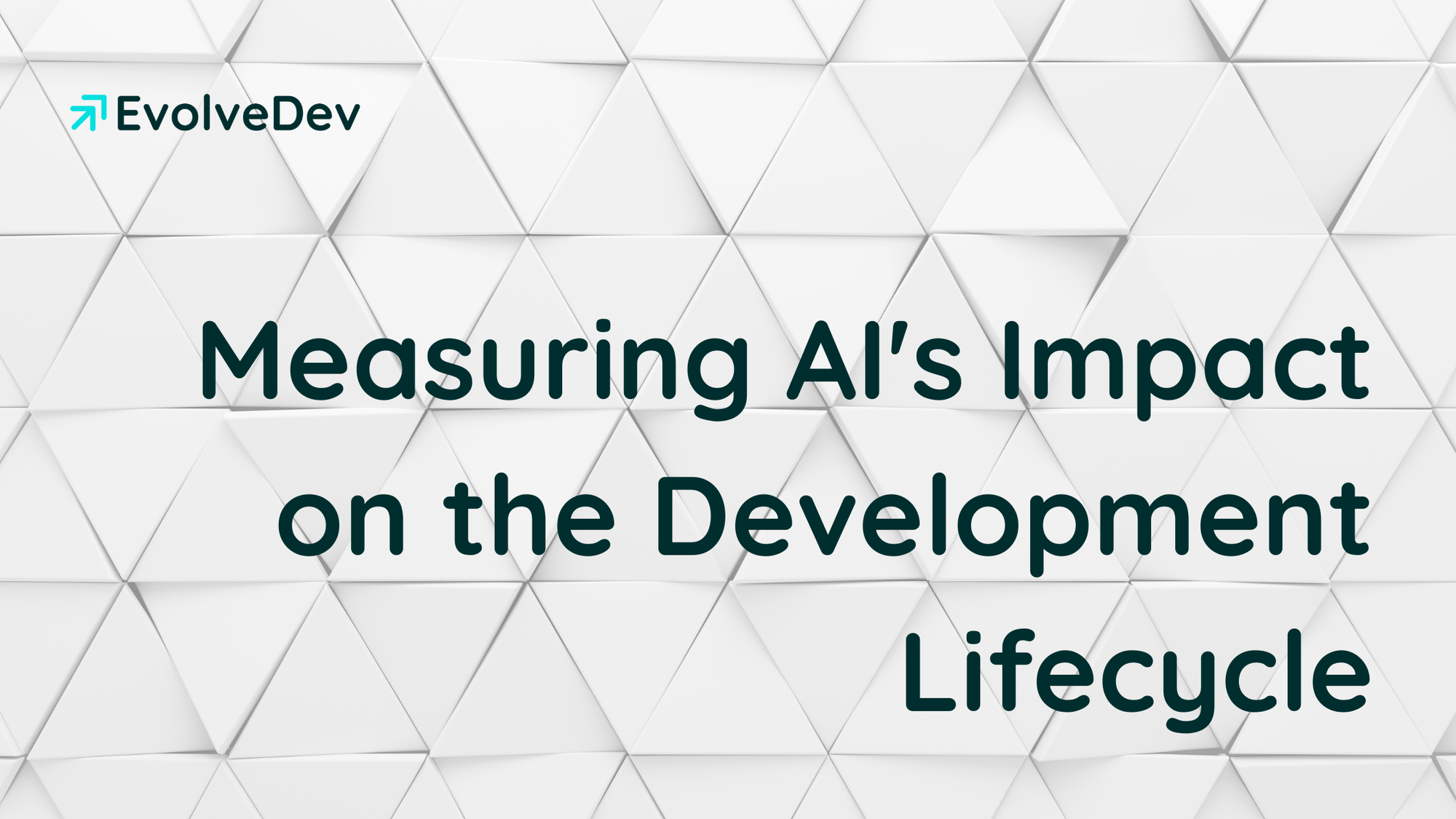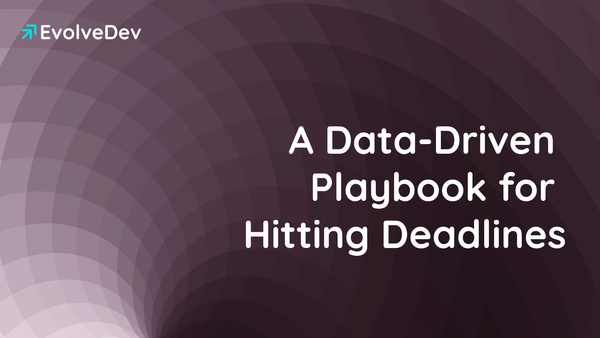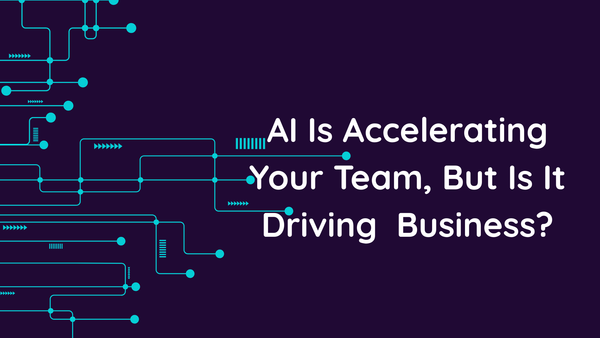Beyond the Hype: Strategically Integrating AI into Your Engineering Organization

The rise of generative AI is not just another trend; it's a fundamental shift in the technological landscape. For software engineering leaders, the question is no longer if they should adopt AI, but how. The temptation is to jump on the bandwagon, acquiring a plethora of AI-powered tools and expecting a magical transformation. However, a reactive, tool-centric approach is a recipe for wasted resources and missed opportunities.
The real challenge—and the greatest opportunity—lies in strategically weaving AI into the very fabric of your engineering culture, processes, and roles. This requires a shift in mindset, from viewing AI as a collection of tools to understanding it as a catalyst for reshaping how we build software. This post will explore how engineering leaders can navigate this transformation, avoid common pitfalls, and strategically empower their teams to become AI-native.
The Pitfall of a Tool-First Approach
Many organizations fall into the trap of treating AI adoption as a shopping spree. They purchase a suite of AI-powered tools for coding, testing, and deployment, hoping for a quick boost in productivity. While these tools can be beneficial, a tool-first approach often leads to:
- Fragmented Adoption: Without a clear strategy, different teams may adopt different tools, leading to a disjointed and inefficient workflow.
- Lack of Ownership: When tools are simply handed down, there's a lack of ownership and a tendency to blame the tool when things go wrong.
- Ignoring the Human Element: The focus on tools can overshadow the need to upskill and empower your engineers, leaving them feeling like passive users rather than active participants in the AI revolution.
- Solving the Wrong Problems: A tool-first approach often focuses on solving isolated problems rather than addressing systemic challenges and opportunities.
Common Pitfalls to Avoid
Beyond the tool-first trap, several other pitfalls can undermine your AI initiatives. Actively steering clear of these is critical for success.
- Neglecting Data Privacy and Security: Don't feed proprietary code into public AI models without strict security reviews. Establish clear guidelines to prevent intellectual property leaks.
- Ignoring the Need for Human Oversight: Don't treat AI output as infallible. Mandate a "human-in-the-loop" for critical applications, as blindly accepting AI-generated code can introduce serious bugs and security flaws.
- Setting Unrealistic Expectations: Don't promise that AI will double productivity overnight. Be realistic with leadership and your team about AI's limitations and frame it as an incremental augmentation tool, not a magic wand.
- Creating a Skills Gap: Don't assume engineers can use AI tools effectively without proper training in prompt engineering and output analysis. Neglecting this creates a skills gap and inconsistent results.
- Focusing Only on Code Generation: Don't limit your view of AI to just code generation. Significant gains come from applying it across the entire development lifecycle, including testing, bug detection, and documentation.
Redefining Roles: The Rise of the AI-Augmented Engineer
Instead of simply handing your engineers a new set of tools, the focus should be on empowering them to think and work in new ways. This means redefining roles and responsibilities to incorporate AI as a core competency. The goal is not to replace engineers with AI, but to create a new breed of AI-augmented engineers who can leverage AI.
- Accelerate Development: Use AI-powered code completion and generation tools to write code faster.
- Improve Code Quality: Leverage AI to identify bugs, security vulnerabilities, and performance bottlenecks early in the development process.
- Automate Tedious Tasks: Offload repetitive and time-consuming tasks to AI, freeing up engineers to focus on more creative and strategic work.
- Act as Critical Supervisors: Understand that current AI tools are powerful assistants, not autonomous agents. Engineers must learn to critically evaluate, guide, and correct AI-generated outputs to ensure quality, security, and alignment with project goals. The human-in-the-loop remains the most critical component.
- Gain Deeper Insights: Use AI to analyze large datasets and gain insights that would be impossible to uncover manually.
A Strategic Framework for AI Integration
A strategic approach to AI integration is not about buying tools; it's about building a culture of innovation and continuous learning. Here's a framework to guide your efforts:
- Start with the "Why" and Analyze the Value: Before you even think about tools, identify the key business challenges you want to address. Crucially, conduct a realistic cost-benefit analysis. What is the expected return on investment for adopting a particular AI solution, factoring in not just licensing costs, but also the time required for training, integration, and ongoing supervision? A clear "why" backed by a solid value proposition prevents chasing expensive trends.
- Focus on People and Processes: Invest in training and development to upskill your engineers and equip them with the knowledge and skills they need to thrive in an AI-driven world. Re-evaluate your existing processes and workflows to identify opportunities for AI-powered automation and optimization.
- Build a Center of Excellence: Create a dedicated team of AI experts who can provide guidance, support, and best practices to the rest of the organization. This team can also be responsible for evaluating and selecting the right AI tools and technologies.
- Foster a Culture of Experimentation: Encourage your engineers to experiment with different AI tools and techniques and to share their learnings with the rest of the team. Create a safe-to-fail environment where experimentation is encouraged and failure is seen as a learning opportunity.
- Measure and Iterate: Define key metrics to track the impact of your AI initiatives. Are you seeing the productivity gains you expected? Is code quality improving? Use this data to continuously iterate on your approach and re-evaluate your cost-benefit analysis based on real-world results.
Setting Realistic Goals and Milestones: A Phased Approach
To translate strategy into action and secure management buy-in, adopt a phased approach that ties every engineering goal to a clear business outcome.
Phase 1: Exploration & Foundation (Q1)
- Goal: Identify high-impact, low-risk use cases and establish a baseline.
- Milestones: Form an AI task force, identify 2-3 pain points (e.g., unit test generation), and launch a pilot with one team and one tool.
- Business Outcome: De-risked Investment. The pilot provides data for a concrete proposal to leadership, such as how AI-driven testing can accelerate the product roadmap.
- Review: Gather quantitative and qualitative data. Decision: Proceed, pivot, or pause.
Phase 2: Targeted Rollout & Skill Building (Q2)
- Goal: Expand adoption and formalize training.
- Milestones: Roll out the proven tool to 2-3 more teams, launch an internal training module, and track success metrics (e.g., aim for a 15% reduction in time for a specific task).
- Business Outcome: Increased Feature Velocity. Report tangible results, like freeing up developer hours to deliver more features per quarter.
- Review: Are metrics being met and is the ROI positive? Decision: Scale further?
Phase 3: Scaling & Integration (Q3 & Q4)
- Goal: Make AI a standard part of the engineering workflow.
- Milestones: Develop a standardized "AI-Augmented Toolkit" for all engineers, explore CI/CD integration, and showcase successes internally.
- Business Outcome: Enhanced Product Quality & Innovation. Report systemic impact, such as reduced bug density and faster time-to-market, which lower costs and improve customer satisfaction.
- Review: Conduct a comprehensive review of the initiative's impact on key engineering metrics to inform next year's strategy.
The Future is Collaborative
The future of software engineering is not about humans versus machines; it's about humans and machines working together in a symbiotic relationship. As an engineering leader, your role is to foster this collaboration and to create an environment where your engineers can thrive in the age of AI. By taking a strategic, human-centric, and financially-grounded approach to AI integration, you can unlock the full potential of your team and build a truly innovative and future-ready organization.
Read the next part:

Take the Next Step with EvolveDev
Implementing this strategy requires the right platform and a supportive community.
EvolveDev.io, helps engineering leaders measure, manage, and improve their development processes with data-driven insights.
To connect with other leaders navigating this transformation, share best practices, and learn from your peers, join our community at Engineering Leadership Hub.






